A spectacular last hurrah
Far from treating 2020 as a stop-gap ahead of major regulation changes next year, teams have come up with the fastest cars Formula 1 has ever seen – and included some eye-popping innovations to boot. Mark Hughes reports from Barcelona
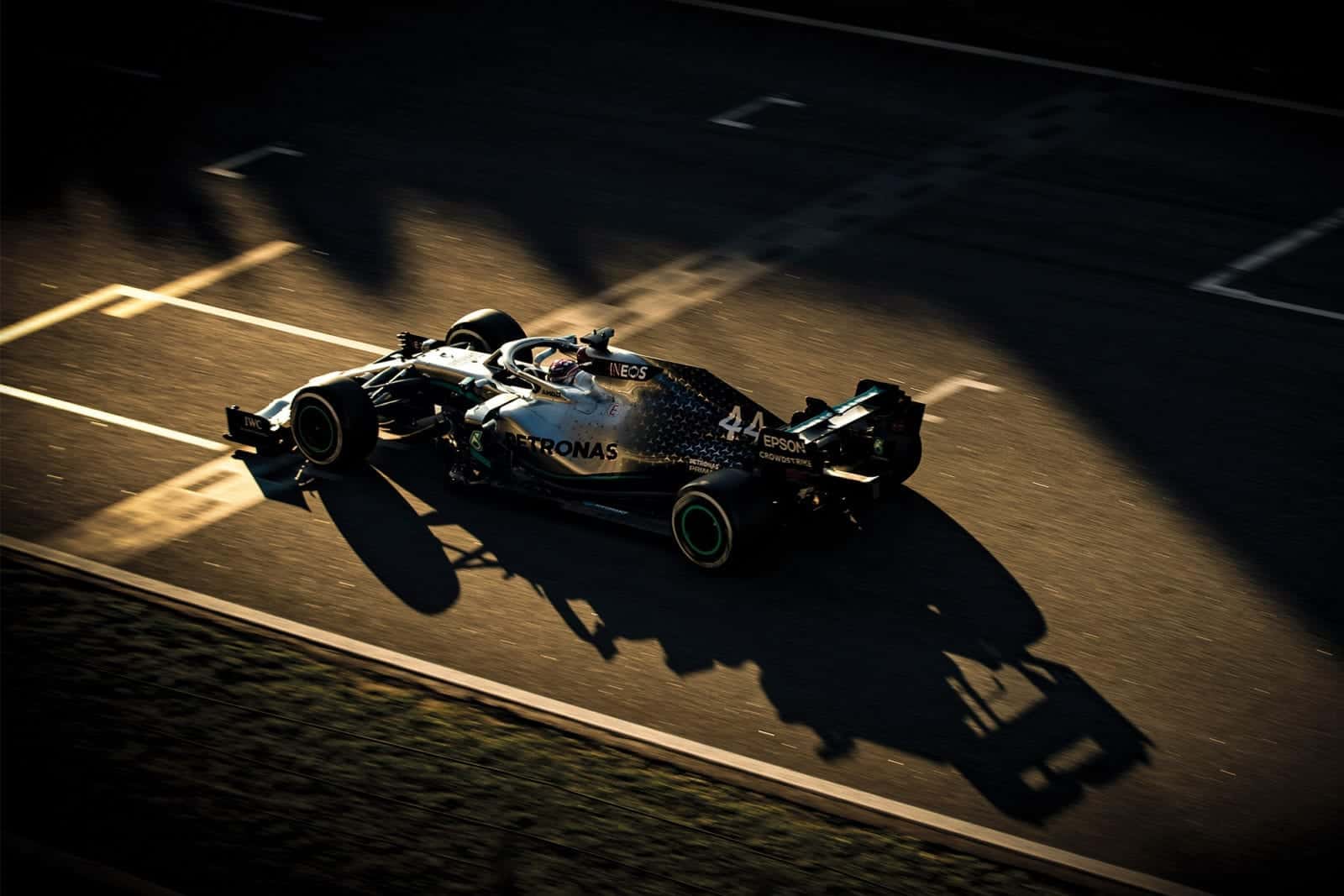
Mercedes on the march: Stop-gap year or not, its stolen all the headlines in Barcelona
LAT
The 2020 generation of Formula 1 cars are likely to be the fastest the championship has ever seen – or will see for many years. In the final season before the much more aerodynamically restrictive regulations of 2021 take effect, the enormous downforce of the wide-bodied turbo-hybrids, combined with the relentless development power of the top teams, could make cars up to two seconds faster than 2019’s – and around five seconds faster than simulations are suggesting for the 2021 cars.
For Mercedes and Red Bull, at least, there is no evidence of the design teams taking their foot off the gas for their 2020 cars to prioritise 2021. Both the new W11 and RB16 feature startling innovations in their suspensions, together with further squeezing of the extremities of packaging to extract more downforce from the body. Both designs scream ambition.
Things are superficially less adventurous at Ferrari with its SF1000, named in anticipation of the Scuderia’s 1000th world championship-status grand prix, set for Azerbaijan now that the Chinese Grand Prix has been postponed due to coronavirus.
“Ferrari is vying with Red Bull as the second-fastest car in 2020”
This is a mild reworking around the ultimately disappointing SF90 of last year, retaining that car’s unloaded outboard front wing concept. This, and the retention of a wide nose, when the progressive choice appears to have become outboard-loaded wing and narrow nose, has left the Ferrari looking somewhat unfashionable. It was only three years ago that the SF70H redefined the generic F1 car with features that are now incorporated everywhere. It’s a reminder of how quickly things move on in F1.
Causing a stir at least as big as those of the Mercedes and Red Bull technical innovations has been the striking visual similarity of the new Racing Point RP20 to 2019’s title-winning Mercedes W10. Labelled ‘the pink Mercedes’, it ruffled further feathers when Sergio Perez lapped it quicker than all but the new Mercedes on the first day of testing.
Although the competitive order from those three days of running at Barcelona is far from definitive, for what it’s worth we’ve arranged them below in the tyre compound-adjusted order of their best laps, taking Valtteri Bottas’ 1min 15.7sec as the standard by which the others are measured.
Mercedes W11’s best lap: 1min 15.7sec
Bottas’s best time in the first week of testing was the equivalent of around 0.7sec quicker than any non-Mercedes. Talking at the launch of the car, Mercedes’ technical director James Allison said: “The challenge was how do we take last year’s best car and produce something properly competitive when the regulations haven’t changed? The temptation for us was just to keep polishing that one. After all, it finished the season really strongly and it was developing very fast through the year, so there were lots of opportunities to make that one quicker. The conservative approach was very, very tempting. But in the end, we decided that wouldn’t be enough. We were feeling the breath of our opponents on our shoulders. We know their hunger, and we know that if we don’t do something impressive with this car, they will eat us up and leave us behind. So, we decided we would make a car that was aggressive. Despite the fact that there was no change in the regulations, we would take every part of the car and see if we could challenge ourselves to make it better.”
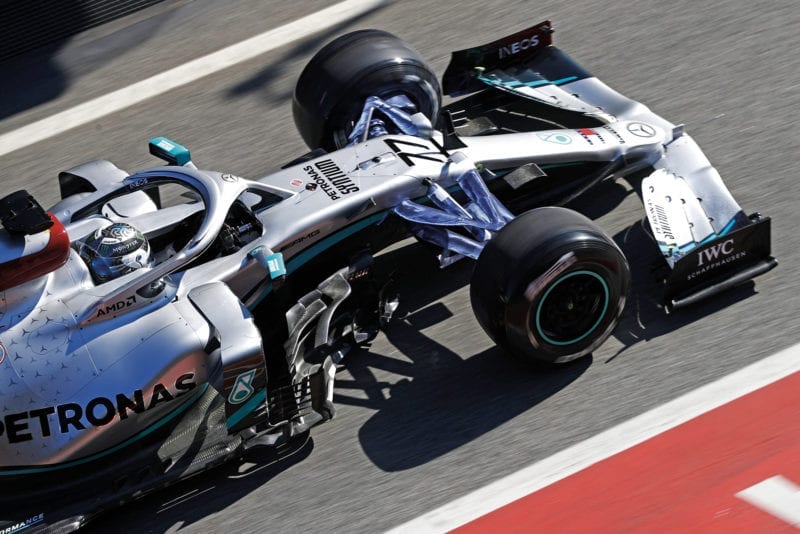
Wheels can alter toe angle to aid stability
Motorsport Images
When viewing the shrink-wrapped contours of any of last year’s cars, it seems inconceivable that any more empty real estate for the airflow could be created within the same set of dimensional regulations. Yet Mercedes has done exactly that, probably more than any other team.
Key to that has been the late adoption of Ferrari’s 2017 innovation of lowering the upper-side impact beam and mounting the radiator inlet above and behind it. This allows the spinning vortices of air that are induced alongside the sidepods to be placed further back – pulling the air flowing from the front suspension and bargeboards and accelerating it down the bodysides. This increases airflow speed as it’s fed into the space between the inner face of the rear tyre and the diffuser. The faster this air is, the harder it pulls on the underbody flow exiting the diffuser.
But incorporating this sidepod layout into the Mercedes has required a significantly different structure of the chassis which, aft of the cockpit, is uniquely T-sectioned on the Mercedes. The chassis has been made significantly narrower. Allison reckons last year’s naked chassis would have stood proud of this one with its bodywork fitted. This has been made possible only after significant help from Andy Cowell’s HPP power unit group, as the latter explains. “There is less heat radiation. The engine now runs well even at higher temperatures. The chassis engineers helped. They enlarged the cooling surfaces without taking up more space for the coolers themselves.” The radiators are indeed smaller thanks to the hotter-running engine and, according to Cowell, all without “adding up a gram or becoming an inch longer, wider or higher”. What he doesn’t say is that all this has been achieved while adding a further 20bhp or so.
The aero gains have been enhanced with the opening up of yet more capacity for the airflow at the rear with a radical re-alignment of the suspension there. The air flowing into that crucial gap between wheel and diffuser now has a much clearer path thanks to a rear lower wishbone that has been moved backwards, towards the crash structure. The upper wishbones mount onto hub extensions even bigger than last year’s, taking them even higher and away from the important flow.
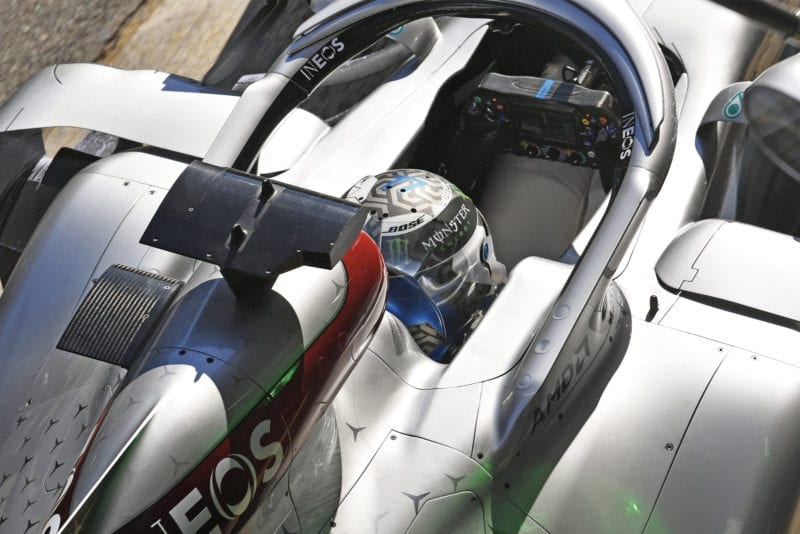
Driver controls angle via push/pull wheel
Motorsport Images
Allison says: “On the front, we have arranged the detail inside the wheels and the way the suspension goes into those wheels so that we have more aerodynamic opportunity at the front end.” What he stopped short of revealing at launch, though, was the eye-popping DAS (dual-axis steering) system. Inboard footage of Lewis Hamilton in testing revealed the steering moving back on the column at the beginning of the straights and, in doing so, adjusting the toe angle of the front wheels. Before the braking zone, the steering would revert to its standard position and the wheels would assume the conventional toe-out stance for the upcoming corner. It would allow a better temperature control across the tyre on the straights, while still retaining the cornering benefits of toe-out into the corner. There may be other, as yet unrevealed, benefits. The FIA has been kept abreast of the system as it was developed over the past year, and it’s satisfied that it’s fully safe. The system is, however, already outlawed for 2021.
More downforce and power for what was already the best car mean Mercedes has set the bar incredibly high as it strives to extend its consecutive title-winning tally to seven.
Red Bull-Honda RB16’s best lap: 1min 16.3sec
Although well down in the headline times at Barcelona, the new Red Bull emerged as the second-quickest in the first week after adjustment is made for the different tyre compounds – made due to Red Bull’s best time of 1min 17.5sec set on the hardest tyre.
At first glance, it’s very similar to last year’s car – running a similarly extreme rake angle – but the detail proves it’s quite different. For one thing, it’s slightly longer, with a bigger distance between the front axle and sidepods to help address an aerodynamic limitation of its predecessor. Its nose has been narrowed even further and the rear suspension wishbones are mounted on hub extensions just as extreme as Mercedes’, clearing a better path for the airflow. But it’s the front suspension that shows the biggest innovation.
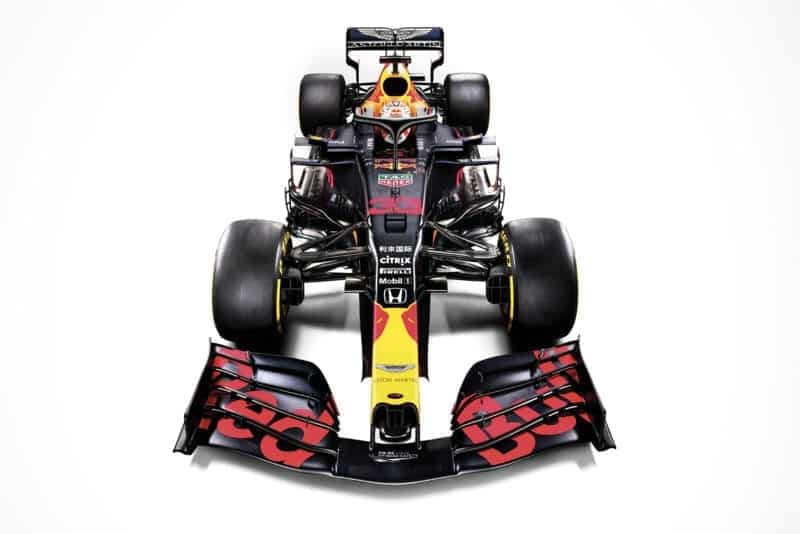
Red Bull looks to be a step ahead of Ferrari
Thomas Butler / Red Bull Content Pool
The unique multi-link arrangement of last year has been transferred from the upper to the lower wishbone, feeding into the wheel hub at separate points, the rear leg lower than the front. This will allow a greater tyre contact patch under high steering angles, helping with mechanical grip. But more unusual is how the front wishbones feed into the chassis. A unique double-bulkhead has allowed the clutch and brake reservoirs to be mounted behind, facilitating the wishbone arm to feed through the chassis and become articulated with what is effectively a wider base. High mounting of the lower wishbones has given the underside of the nose a more extreme upward sweep, creating a low-pressure area, speeding up airflow to the underfloor.
Honda has delivered a very significant power boost to an engine that was already impressive by the end of last season. In action at Barcelona, the RB16 looked quite sensational through the fast direction changes of the Turns 2-3 sequence but edgier in slower corners. If the car can be manipulated to give a better balance over the spread of speed ranges, it could worry Mercedes.
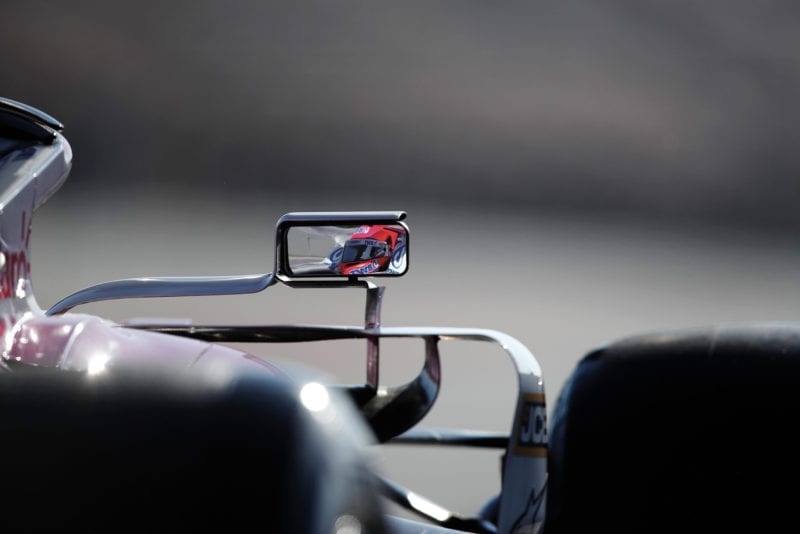
Can Racing Point stop looking over its shoulder and fight the leaders?
Motorsport Images
Racing Point-Mercedes RP20’s best lap: 1min 16.6sec
The first visual cue of the RP20’s inspiration is the nose – its slim contours and spoon-like nose tip is a dead ringer for the 2019 title-winning Mercedes W10. Technical director Andy Green makes no apologies for the Mercedes inspiration.
“It follows the same low-rake philosophy [as Mercedes],” he says. “We had been previously trying to adapt our use of the Mercedes engine, transmission and rear suspension to a high-rake car because that was the aerodynamic path we’d originally gone down in 2014. We’ve not been able to make a brand new car from scratch, then another one and another one each year. We haven’t had the production capability or the financial capability to do that.
“So all our cars have been heavily related year-on-year. If we’d not done that, this team would not be here now; we’d be gone. This is the first year where we could, we have grasped the opportunity of a total change in philosophy. It’s the last year of the regulations, so whatever we’d done would have been scrapped at the end of the year anyway. It’s a risk, but it’s one I think was worth taking.”
Early feedback from Sergio Perez was that the car has been born well, the rear-end instability he has worked around in the previous six years seemingly gone. Ahead of the team’s rebranding to Aston Martin next year, could the final Racing Point have giant-killing potential?
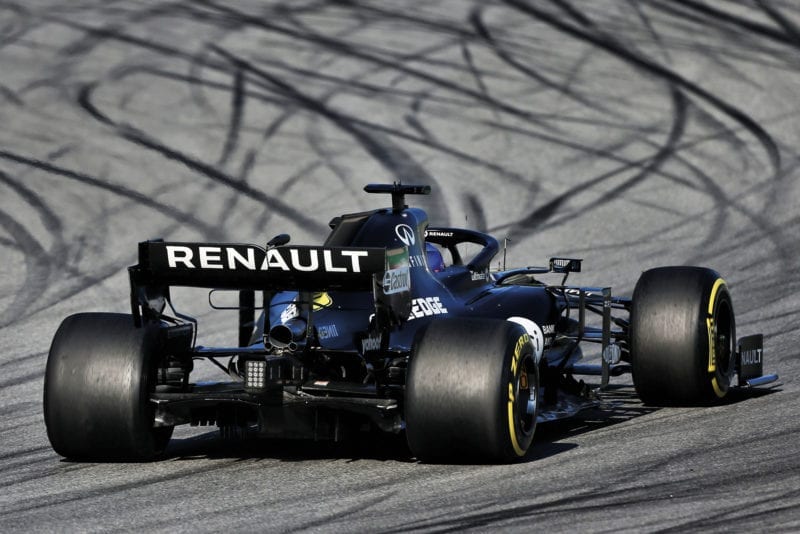
Renault’s 2020 car reflects a technical structure that no longer exists
Renault
Renault R.S.20’s best lap: 1min 16.6sec
Renault is far from bullish about its 2020 prospects as the company considers its future F1 participation beyond this year. The R.S.20 was created by a technical team headed by people no longer there, Nick Chester and Pete Machin (technical director and aero chief respectively) having departed following the disappointing form of last year’s car. With its slimmed-down nose, the aerodynamic evolution from its predecessor is visible, but the team is pinning its hopes on the budget cap of 2021 bringing everyone back to its level. That said, Daniel Ricciardo was giving some positive feedback about the car in Barcelona.
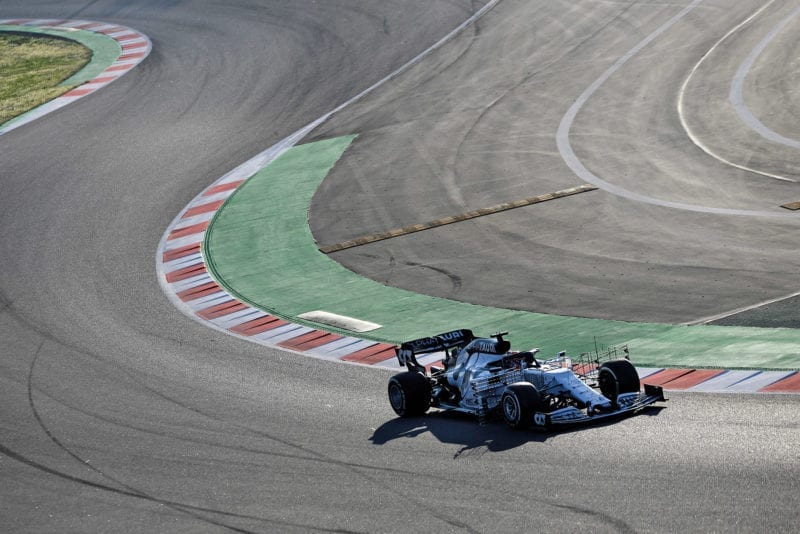
AlphaTauri has carryover from Red Bull, but there’s still clear differences
Getty
AlphaTauri-Honda AT01’s best lap: 1min 16.9sec
The ex-Toro Rosso team has produced an aggressive-looking design for 2020. Based on last year’s Red Bull RB15 running gear, its chassis and aero package are, however, unrelated and created by the Jody Eggington-led technical team that’s spread between Faenza and Bicester. In contrast to Red Bull, it has continued with the unloaded outboard front wing concept, finding that the wheel wake with the alternative loaded wing was just too difficult to control with the resources at its disposal. The progressive elements of the design are around the sidepods with very high-mounted radiator inlets.
McLaren-Renault MCL35 1m 17.0s
McLaren was emphasising that the car it took to Barcelona was very basic to ensure reliability and that its updates coming for Melbourne are expected to be powerful. But even in basic form, the evolution from 2019 is clear with a much more compact rear end made possible by a narrower gearbox and reconfigured rear suspension. This has allowed the team the possibility of progressing further towards a loaded outboard front wing. Last year whenever this was tried, the rear bodywork proved a limiting factor. Given the team’s ‘best of the rest’ form in 2019, the target is to close the gap while retaining that status.
Alfa Romeo-Ferrari C39’s best lap: 1min 17.1sec
Like Ferrari, Alfa has stuck with the unfashionable wide nose and unloaded outboard front wing and continues to run the Ferrari engine/transmission/rear suspension package. The rear bodywork features a fairly dramatic undercut, continuing the same basic principle introduced by this team under its Sauber label two years ago. Kimi Räikkönen set the second-fastest time, but it was on the softest tyre and just prior to running out of fuel on track. Adjusted for the tyres, it wasn’t showing any great form compared to its midfield rivals. Williams-Mercedes FW43’s best lap: 1min 17.4sec A logical evolution of its 2019 car, the new FW43 appears to be a vast improvement. George Russell reported from Barcelona that the car no longer scares him with its lack of rear grip and that he can now attack the corners. On track, it looks balanced, but without the outright grip of the midfield’s best.
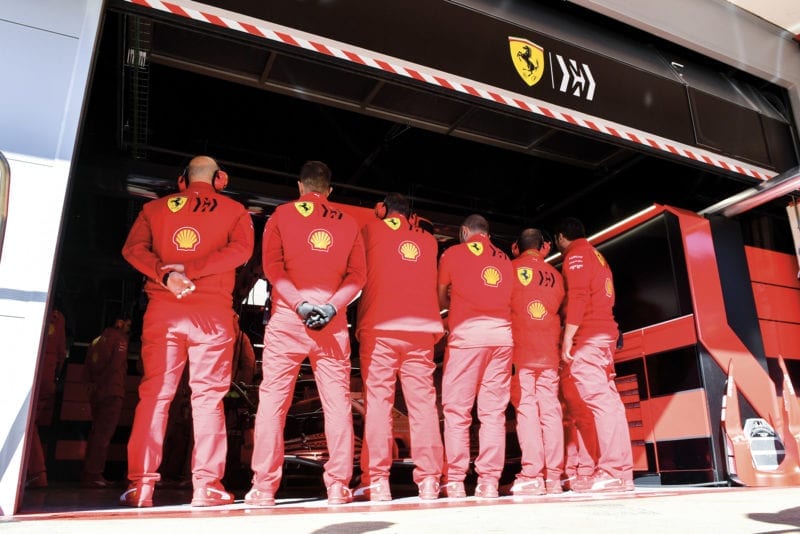
The SF1000 may lack eye-catching designs, but it hasn’t stopped secrecy…
Motorsport Images
Ferrari SF1000’s best lap: 1min 17.5sec
Despite the poor headline time, this is not really among the slowest cars. Its slow tyre-adjusted time was a reflection of a team devoting its first week to fully mapping its aerodynamics, determined to uncover and understand exactly how it is behaving.
This follows from last year’s bitter experience when the SF90 looked the class of the field in the cool of testing before the season-opening races proved it was a function of an understeer balance that helped with front tyre temperatures and gave a flattering picture. As Ferrari conducted its aero tests it was running its engines in a very detuned form (even compared to Haas and Alfa). The engine mode accounted for around one second of lap time – which would put the Ferrari vying with Red Bull as the second-fastest car.
In Friday’s long runs, Sebastian Vettel did a Lewis Hamilton-matching stint that comfortably eclipsed Verstappen’s Red Bull. Ferrari team principal Mattia Binotto did concede that it was behind, but the picture for Ferrari is not as dire as it appears.
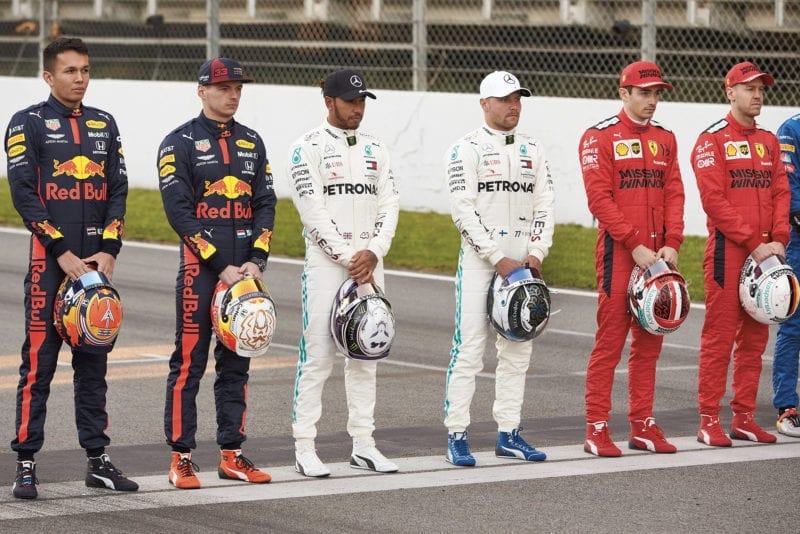
Is this the title race? Merc looks to have the early edge
Daimler
The car is visually less evolved from its predecessor than the Mercedes, with a slightly longer wheelbase and better bodywork packaging around the rear but still with the unloaded outboard front wing. Did Ferrari write-off 2020 in advance, to put everything into 2021’s campaign?
Haas-Ferrari VF20’s best lap: 1min 17.6sec
Determined not to repeat 2019’s nightmare, in which an aerodynamic problem caused the rear tyres to overheat, Haas has moved to the ‘easier’ unloaded outboard wing. It’s also slightly longer in wheelbase and is a reflection of a longer Ferrari gearbox. Like Ferrari, it spent much of the first week validating its simulation rather than chasing times. It would be no surprise to see it vying to be at the head of the midfield this year once the season starts.
Was ist DAS?
Mercedes’ trick steering explained
On day two of pre-season testing, eagle-eyed observers noticed something unusual about Lewis Hamilton’s steering inputs to the W11. In addition to turning the wheel, he was also pulling and pushing it. Just after midday, technical director James Allison admitted that the team was running a new steering set-up called DAS. It later emerged that DAS stands for dual-axis steering.
So why would Mercedes want to alter the toe angle dynamically? To briefly explain, the toe is the angle that the wheels sit in relation to dead-ahead when the steering is straight. If the front of the wheels is pointing out, this is known as toe-out, the opposite and they are toed in.
The toe angle has a significant effect on a car’s handling and changes how the tyre interacts with the road surface. Generally, a degree of toe-out will aid both stability and grip on initial turn-in to a corner, however, too much toe-out means the tyre scrubs – effectively it is dragged not rolled across a track surface.
What Mercedes is trying to achieve with its system is a greater degree of toe angle on corner entry than it would ideally want to carry around a whole lap. If the wheels were radically toed out, this would be great for turn-in but would increase scrub on the straights, increasing tyre drag (making the car less efficient) while also increasing tyre temperatures. By allowing the driver to change toe between corners and the straights, it can theoretically get the best of both worlds.
Exactly how this toe change is achieved remains something of a mystery. As the car came in from its final stint before lunch, Mercedes mechanics tore into the front end, presumably swapping the DAS out for a more conventional set-up. This involved the removal of all of the ancillaries around the inboard front suspension and, just before they pulled the blinds across in front of the car, the steering column was about to be removed.
There is the potential for the system to be either mechanically or hydraulically actuated. As the driver pushes or pulls the wheel, the length of the steering tie rods needs to change to alter the toe angle. This could be achieved either on the rods or at the point where they interface with the steering rack. A quick glance through the relevant sections of the regulations seemingly reveals its legal and Mercedes is confident that is the case.
Lawrence Butcher

